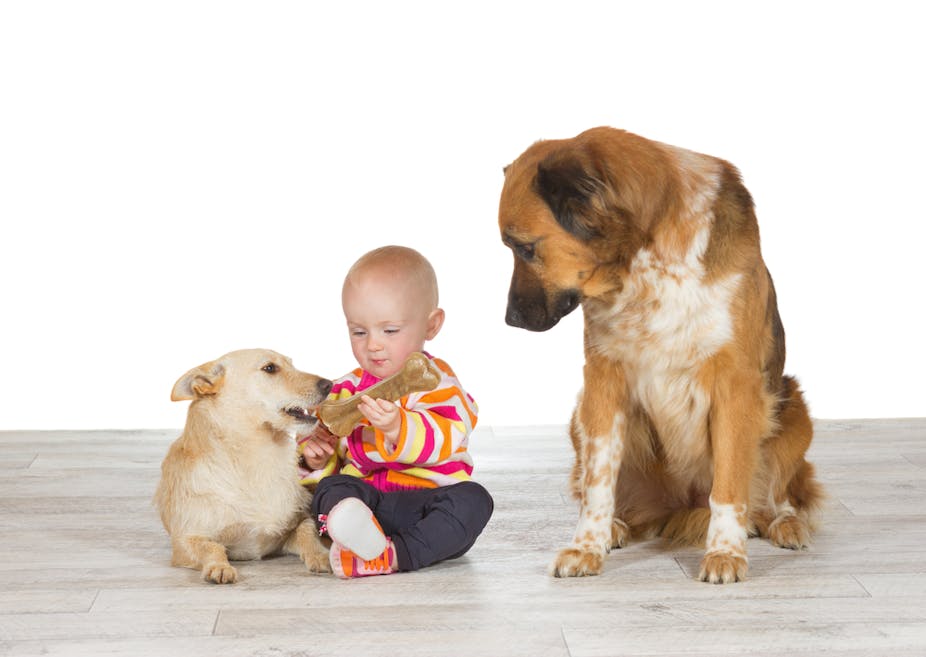Are animals jealous? How would we know? Scientists are educated to have a deep scepticism about attributing sophisticated mental abilities to non-human animals. Anthropomorphism is regarded as a scientific sin. However, the paradox is that scientists are all Darwinists, and Darwin’s great contribution to psychology was the argument for the continuity of mind across species, not the uniqueness of humans. He was explicit that animals and humans shared a wide range of emotions, including jealousy.
Many contemporary theories of jealousy focus on its development during infancy and childhood. A paper published in the journal PLOS One takes a leaf out of such studies to conduct an experiment with dogs. The paper’s findings suggest that dogs show behaviour indicative of jealousy when their owners interacted with lifelike stuffed dogs, and not when they interacted with other, non-doglike objects.
Jealousy is thought to develop after basic emotions such as anger and fear, and is thought to require relatively sophisticated cognitive capacities including elements of self-consciousness. The requirement of self-consciousness, in combination with the natural reluctance of scientists to be caught anthropomorphising, makes any claim of jealousy in animals controversial.
The scepticism over the existence of sophisticated emotions such as jealousy, guilt or empathy in animals is on reflection odd. Most scientists are happy to grant animals basic emotions such as anger and fear. It would not be anthropomorphic to say that an animal is angry or scared. Anger and fear have a clear evolutionary function for animals and humans, and even though animals may not experience such emotions in precisely the same way as humans, there is a clear continuity.
Jealousy’s role in social species
When we consider the function of jealousy it would seem equally important for many social species. All jealousy shares the characteristic of being focused on relationships. Jealousy in essence is a reaction to a threat to a social relationship whether that is parental, sexual or a friendship or alliance. All such relationships are potentially vital in social species.
We know animals form alliances and bonds (contemporary scientists are deeply reluctant to talk about animal friendships even though Darwin frequently did) as they are often vital to survival in hierarchical social species. We all need allies. To have a mechanism that makes animals sensitive to potential threats to such alliances provides a clear evolutionary advantage.
It would be foolish to claim that animals experience the existential pain that can be part of the human experience of jealousy. But given the functional necessity of something like jealousy in any social species, it seems equally unlikely that jealousy emerged from a clear blue sky as a uniquely human adaptation. Emotions are the functional adaptations that help organise behaviour, and jealousy has a similar function across a range of species.

Other minds, other species
Jealousy is classed as a secondary or social emotion, in contrast to primary or basic emotions. Secondary emotions such as empathy, pride, embarrassment and guilt and are thought to be important for maintaining stable social structures, rather than providing the immediate survival benefits of basic emotions such as fear.
There is very clear evidence that basic emotions are tied to particular sites in the brain, and these are the same across species. The same link of emotion to location is not the case with secondary emotions. This may be because secondary emotions are the result of more distributed networks of neurons than primary emotions. However, mammal brains (including humans) are remarkably similar in structure and have all the same bits in all the same places, so from an anatomical point of view there is no reason to preclude animals having secondary emotions. Humans do not seem to be uniquely designed to support secondary emotions.
Being certain about the mental state of any person (let alone a member of another species) other than ourselves is problematic as we cannot know their mental states directly. This is known as the problem of other minds. However, we can have reasonable confidence that a range of species experience basic emotions such as anger, as the behaviour and even facial expressions associated with basic emotions are consistent and recognisable across species.
But emotions such as jealousy do not have any unique behaviours or facial expressions associated with them. Jealousy can manifest as anger or as distress, for example. Despite all the folk psychology and human projection that often suggests otherwise, there will always be arguments about whether a dog can show jealousy, empathy, or guilt, because of the difficulty of measuring emotion in any non-human animal.

